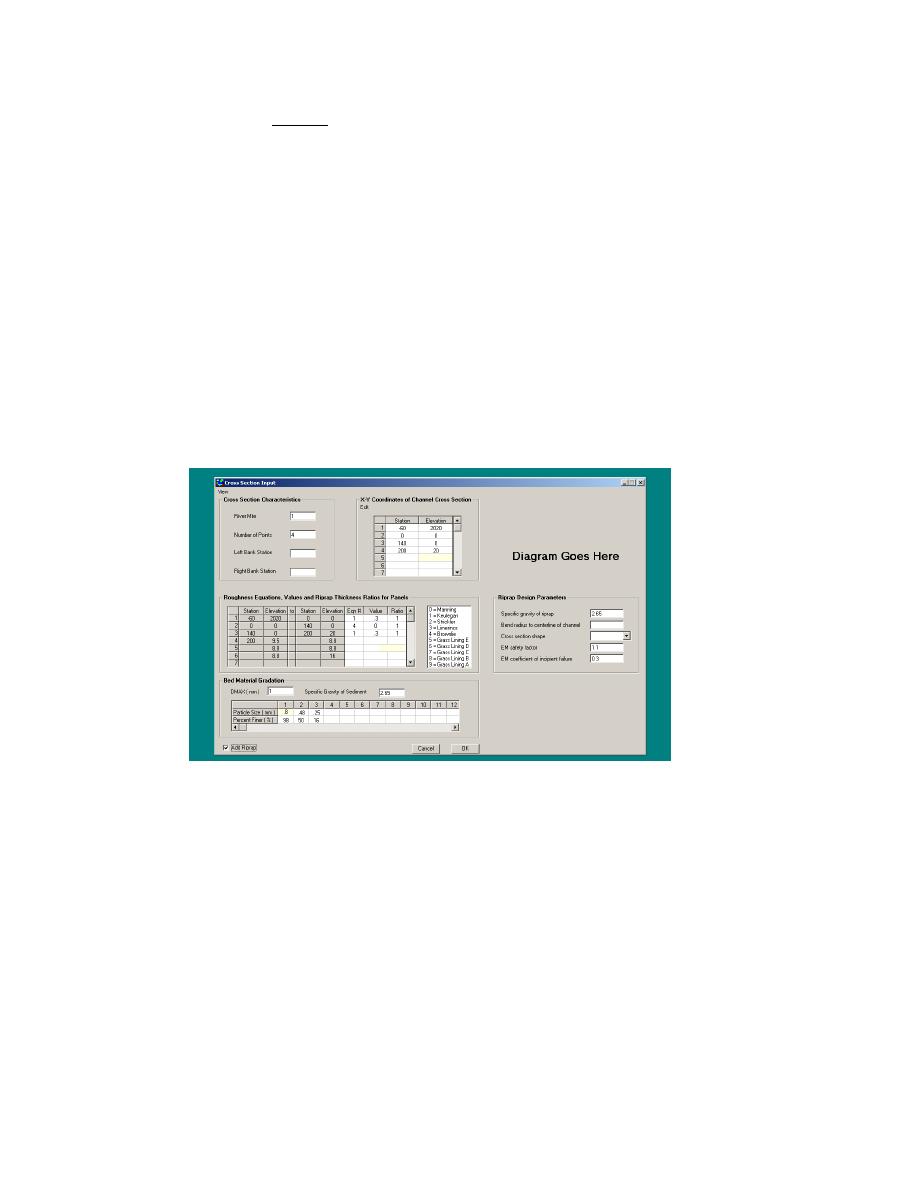
PF record is required for riprap calculations because the program tests bed
particles against the Shield's diagram to determine whether or not riprap is
needed.
Considerable care must be employed when applying the cross-section shape
option because flow conditions may be outside the range of conditions used to
develop the riprap equations. When these calculations are made, it is important
that the user define the side slope protection as a single panel in the geometry
input. SAM will use 0.8 times the maximum depth in the panel for the local flow
depth in the riprap equation. When a bend radius is specified, SAM uses the
average velocity in the cross section for VAVE in the riprap equation. Therefore,
it is important that the input geometry include only channel geometry and
discharge. When a bend radius is not specified, SAM uses the calculated panel
velocity for VAVE in the riprap equation. This calculation may provide useful
information for compound channels in straight river reaches, but it is an
extension of the procedure outlined in EM 1110-2-1601 (USACE 1991, 1994).
Careful study of the recommendations and guidelines described in that EM are
considered essential.
Figure 6-12. Additional input needed when riprap requested on the Station-
Elevation normal depth input screen.
Sample Input Data
These calculations can be accessed through the "Normal Depth" input, as
described earlier. Figure 6-12 shows some of the required input data for riprap
size calculations when station elevation geometry is input. Figure 6-13 shows
some of the required input data for riprap size calculations when channel
template geometry is input. Other required data are particle size on the channel
bed and thickness of the riprap by panel (the RT record). The RT record also
tells the calculations in which panel to put riprap. This record is not available in
SAMwin at this time and must be manually made and put in the input file. The
106
Chapter 6
Input Requirements and Program Output for SAM.hyd



 Previous Page
Previous Page
